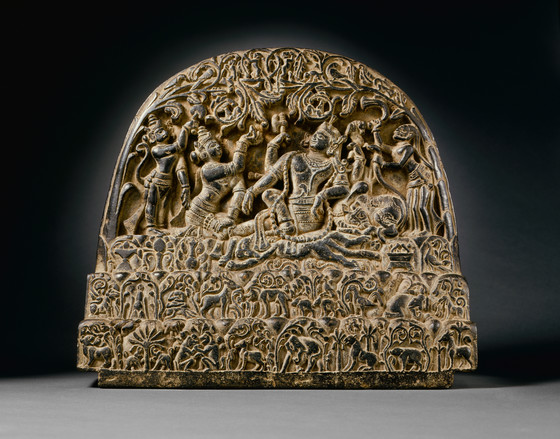Shiva's Family on Mount Kailasha

Please log in to add this item to your gallery.
View comments
No comments have been posted yet.
Add a comment
Please log in to add comments.
Please log in to add tags.
* Nearly 20,000 images of artworks the museum believes to be in the public domain are available to download on this site.
Other images may be protected by copyright and other intellectual property rights.
By using any of these images you agree to LACMA's Terms of Use.
Shiva's Family on Mount Kailasha
India, Odisha (Orissa), Vishnupur, 14th-15th century
Sculpture
Black schist
12 5/8 x 14 1/4 x 3 1/8 in. (32.06 x 36.2 x 7.93 cm)
Harry and Yvonne Lenart Fund and Museum Acquisition Fund (M.88.51)
Not currently on public view


